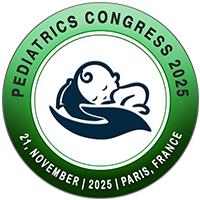
Valeriya Yudina
Sechenov University , Russian FederationPresentation Title:
Using ILAR and PRINTO criteria in sJIa diagnostics
Abstract
Introduction: Systemic idiopathic juvenile arthritis (sJIA) is an acute and severe autoinflammatory
disorder characterized by fever, rash, generalized lymphadenopathy, hepato-
and/or splenomegaly, serositis, arthritis, or arthralgias. To verify diagnosis
sJIA doctors use the ILAR and PRINTO criteria. According to ILAR criteria all
patients should have an arthritis at disease onset. But not all the patients
develop arthritis at the onset of the disease, which complicates the diagnosis
of sJIA.
Objectives: to identify specificity and sensitivity of both
criteria (ILAR and PRINTO) for sJIA
Materials and
methods: We’ve analyzed
both criteria for children with verified diagnosis sJIa, n=78. As the group of control,
we took a database of the history of disease of children with sjia-like
symptoms such as (fever, rash, lymphadenopathy, hepato or/and splenomegaly,
serositis, arthritis), n=32, with the following diagnoses% multisystem
inflammatory disease (61,54%), juvenile idiopathic arthritis (12,82%), Kawasaki
disease (10,26%), diffuse connective tissue diseases (5,13%), acute
lymphoblastic leukemia (5,13%), reactive arthritis (2,56%), lymphoma (2,56%). In purpose to identify which of criteria (ILAR
or PRINTO) has more specificity and sensitivity we’ve used roc-analyse.
Results: The ILAR criteria are the most accepted for
diagnosing sJIA, however, the absence of a mandatory clinical sign - arthritis
in a number of patients at the onset of the disease does not allow diagnosing
sJIA at the onset of the disease, which led to the development of new PRINTO
criteria, in which arthritis is not a mandatory criterion. Comparative analysis
of these criteria on the study group of patients showed that when assessing the
ILAR criteria, the odds ratio is 6.366 (CI 95% 2.356-17.200; p <0.001). At
the same time, this model has a higher specificity - 84.2%, sensitivity -
54.4%. The overall accuracy of the model was 65.1%. The AUC indicator for this
model was 0.693±0.052 (CI 95% 0.591 - 0.795; p = 0.001), which indicates the
average quality of the prognostic model. When using PRINTO criteria in
patients, the odds ratio of having sJIA in a patient is 9.230 (CI 95%
2.753–30.947; p <0.001). According to the results of constructing the ROC
curve, the AUC indicator was 0.644±0.059 (CI 95% 0.812-0.759; p=0.012), which
corresponds to the average quality of the prognostic model. At the same time,
the model has 94.8% sensitivity in terms of predicting whether patients belong
to the sJIA group. The specificity of the model was 34.2%. The overall
percentage of correct predictions reaches 74.3%. When evaluating the combined
use of ILAR and PRINTO criteria, the model with high sensitivity predicts the
presence of sJIA in a patient in 98.5% of cases, while the specificity of the
model was 34.2%. The overall percentage of correct predictions is 75.5%.
According to the results of constructing the ROC curve, the AUC indicator was
0.775±0.048 (CI 95% 0.681-0.869; p<0.001), which indicates the good quality
of the prognostic model.
Conclusion: When performing a regression analysis for the PRINTO
and ILAR criteria for sJIA, the following conclusions can be made:
• PRINTO criteria have the highest sensitivity of
94.8% versus 54.4% for ILAR.
• ILAR criteria have a higher specificity, which is
84.2% versus 34.8% for PRINTO criteria
• When using both criteria simultaneously, the
sensitivity increases to 98.5%.
Taking into account the obtained results, it can be
concluded that the PRINTO criteria are the most inclusive, however, the
specificity of these criteria is lower than that of the ILAR criteria, and
therefore, for higher sensitivity, it is recommended to use both criteria
together.
Biography
TBU...

